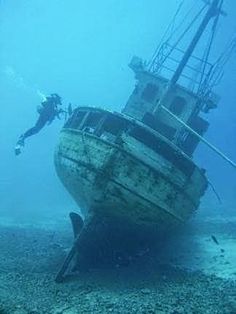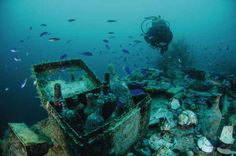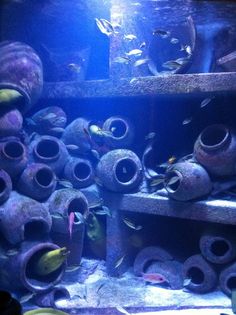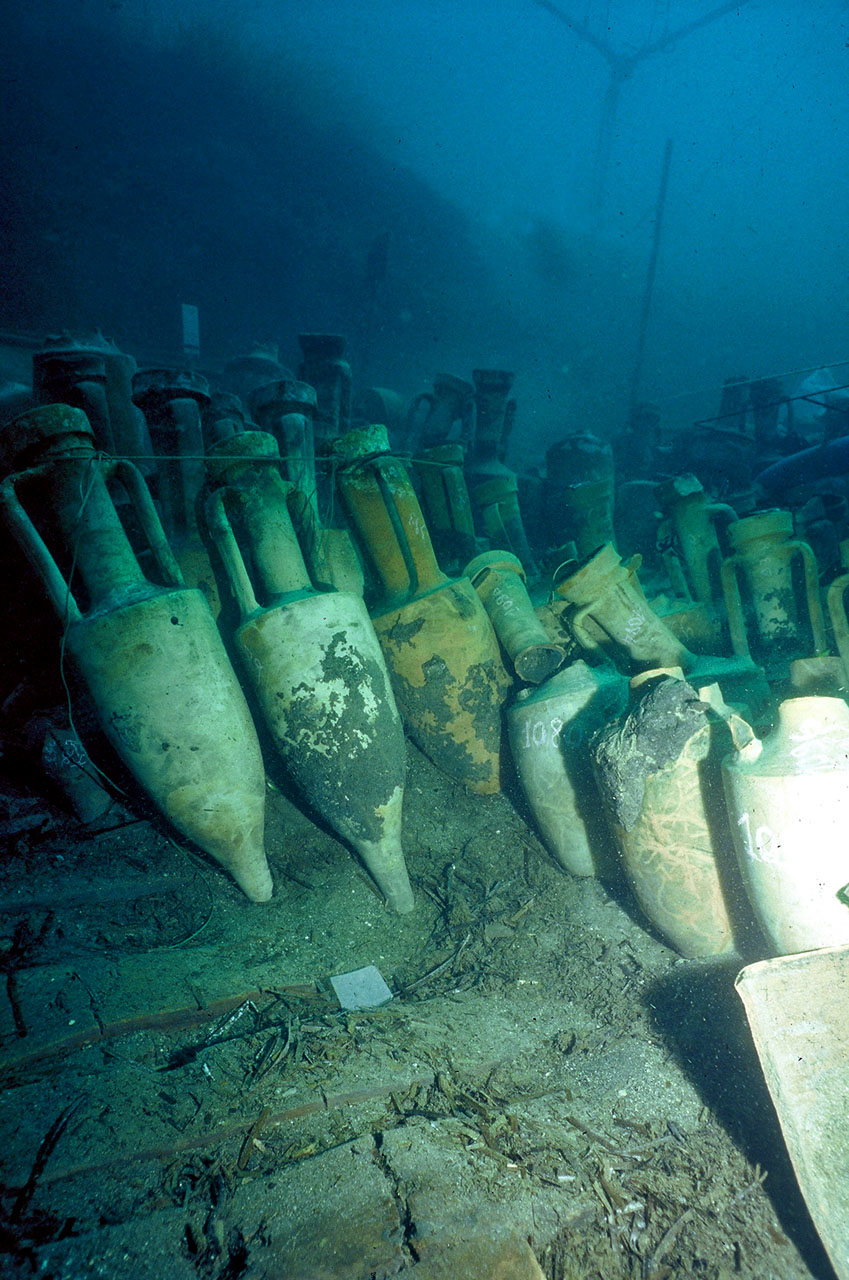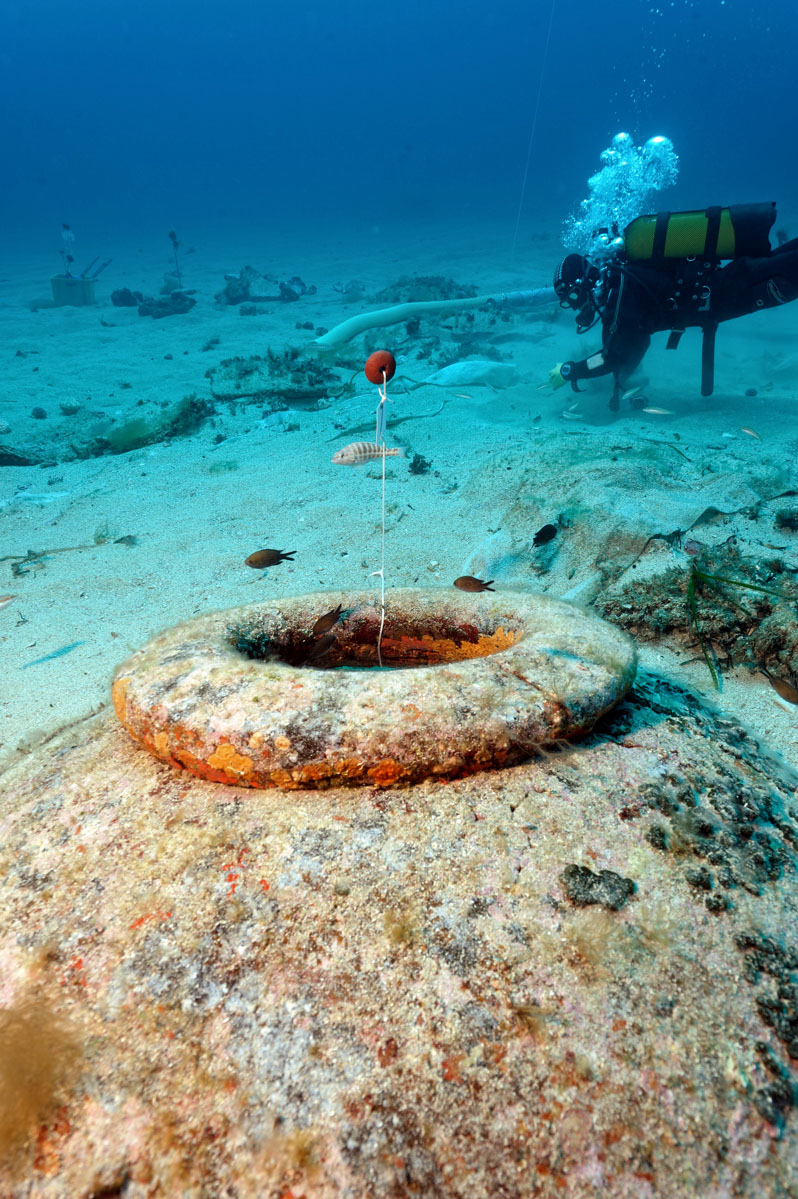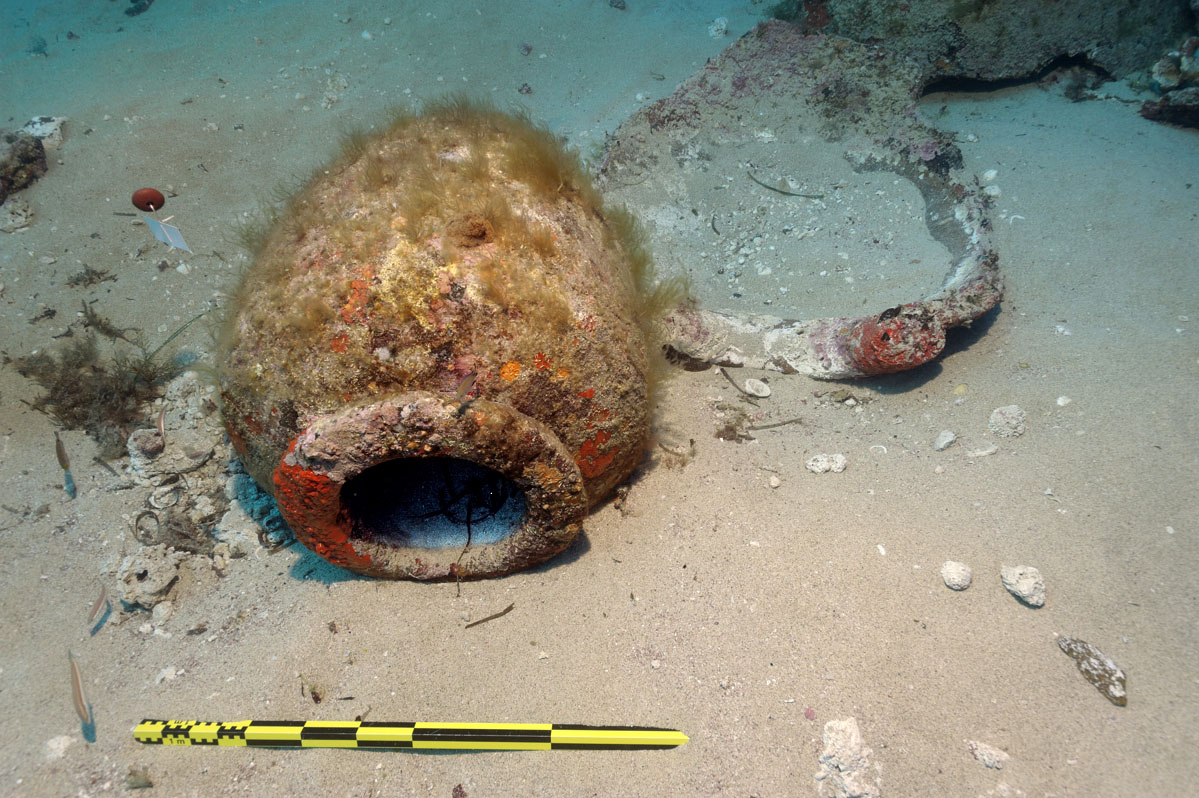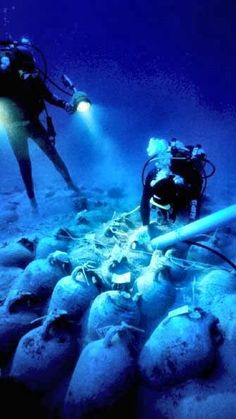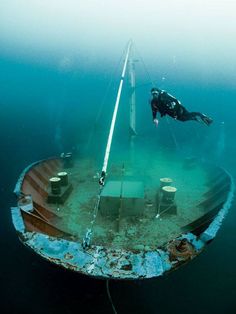Unveiling the Ancient Wine Trade: Tank Boats and Stamped Dolia Shed Light on Antiquity’s Bulk Wine Transport
The tank boats found in these wrecks were specially equipped to accommodate the transportation of wine. Inside these vessels, between two and fifteen dolia were secured. These dolia, measuring between 1.60 meters and 1.80 meters in height, were massive terracotta containers capable of holding up to 2,500 liters of wine each. The dolia were likely fixed in place during the boat’s construction, ensuring stability during transportation. Remarkably, all the dolia discovered in the dozen wrecks bear the stamp of their manufacturer, indicating a specialized production of these containers.
In addition to the dolia, the tank boats frequently carried hundreds of amphoras. These smaller containers were placed at the front and rear of the boats, further augmenting the wine-carrying capacity. Amphoras were commonly used in ancient times for the transportation and storage of various goods, including wine, and their presence on these vessels attests to their importance in the wine trade.
The discovery of these tank boats and their cargo provides a fascinating glimpse into the ancient practices of bulk wine transport. It highlights the advanced logistical systems employed by ancient civilizations to support the thriving wine trade. The sheer quantity of wine that could be transported aboard these vessels demonstrates the scale of production and consumption in the ancient world.
Excavations and research conducted by organizations like the Institut national de recherches archéologiques préventives (Inrap) have been instrumental in uncovering and documenting these significant finds. By meticulously studying the wrecks and their contents, archaeologists can piece together the historical context and shed light on the intricate networks of trade and commerce that existed in antiquity.
The chronological frieze of wine history, as revealed through these excavations, offers a fascinating narrative of the ancient wine trade. It showcases the ingenuity and resourcefulness of ancient civilizations in devising methods to transport wine over long distances and meet the demands of a growing market. Furthermore, the stamped dolia provide valuable insights into the manufacturing processes and standardization of containers in ancient times.
The ongoing efforts of archaeological organizations and researchers continue to deepen our understanding of the ancient world and its vibrant trade networks. Through the study of these archaeological treasures, we gain a renewed appreciation for the role of wine in ancient societies and the remarkable achievements of our ancestors.
In conclusion, the excavations of tank boats and the discovery of stamped dolia and amphoras along the Mediterranean coast offer a compelling narrative of the wine trade in antiquity. These findings contribute to the chronological frieze of wine history, shedding light on the methods of bulk wine transport and the organization of trade and commerce in ancient times. As we delve further into the past, the ancient wine trade reveals itself as a remarkable testament to human ingenuity and the enduring cultural significance of this beloved beverage.
Hits: 4

